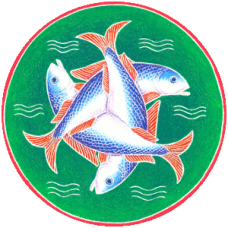
His vital realisation that true healing is dependant on ‘like cures like’ came about through his study of scientific papers on the medical use of the bark of the chinchona tree from South America. The medicine, recommended, tried and tested for treating malaria – rife across the continent of Europe at the time – had a reputation for poisoning healthy people who produced exactly the same symptoms as a malarial patient. This coincidence sparked in Hahnemann a drive to understand his observation. Noting that Belladonna (the ‘herbal’ extract of Deadly Nightshade), used to treat scarlet fever in undiluted doses, caused potentially dangerous reactions he experimented with dose dilution in order to avoid causing unnecessary symptom aggravations in the sick.
Homeopathy - What is it?
He realised that remedies should be prepared to their lowest effective potential dosage in order to effect the gentlest possible cure. It is here that the most confusion and disinformation about homoeopathy begins. Hahnemann prepared his medicines by diluting a single drop of tincture in 99 drops of pure alcohol and then agitating the liquid violently in a process called ‘succussion’. (He drummed the fist-held test tube on his bible.) If the dilution and succussion are repeated more than six times, very little if any of the original substance remains in the liquid. Hahnemann was very much aware that the dilution went beyond chemistry and into the realm of physics; he discovered that the intrinsic energy or ‘spirit’ – he knew nothing of atomic energy – of the substance maintains and enhances the curative nature of the original material but holds no toxicity. This has obvious advantages when poisonous substances are used; homoeopaths frequently prescribe such remedies as Belladonna, Arsenic, Aconite or Copper.
Homoeopathy is a form of alternative medicine developed since 1796 by a German physician and polymath, Samuel Hahnemann, and based on the doctrine of ‘like cures like’ whereby a substance that causes symptoms of disease in a healthy individual will help cure the same symptoms in sick individuals.
Homoeopathic Remedies
Homoeopathic medicines that are prescribed are known as remedies. They are made from a wide variety of substances taken from the mineral, vegetable and animal kingdoms. Hahnemann’s discoveries took a long lifetime to formulate though he became a renowned if controversial physician across Germany and later France.


However, what works in the preparation of poisons proves true for all materials; chamomile and onion are also common remedies. Even insoluble substances can be turned into homoeopathic remedies: Hahnemann began the preparation of metals by grinding tiny amounts in milk sugar (a process called trituration) until they were soluble in alcohol and then succussed them to the required potency. Today, every homoeopathic pharmacy in the world prepares remedies in the manner Hahnemann laid down. All remedies, homoeopaths believe, are not just ‘dilutions’ but preparations of the intrinsic energy held within the the substances at their atomic and therefore most basic level.
Potency of remedies
‘Potency’ in homoeopathy refers to the number of times a remedy has been put through the process of trituration and succussion. The ‘centesimal’ scale refers to the 6c, 30c, 200c, 1M (1000)c, 10M, 50M and CM (100,000) which are commonly available from the pharmacies. Usually the potencies from 6c to 200c are made by hand while everything above is prepared with the aid of a machine that measures and agitates the remedy automatically.
We need your consent to load the translations
We use a third-party service to translate the website content that may collect data about your activity. Please review the details in the privacy policy and accept the service to view the translations.

